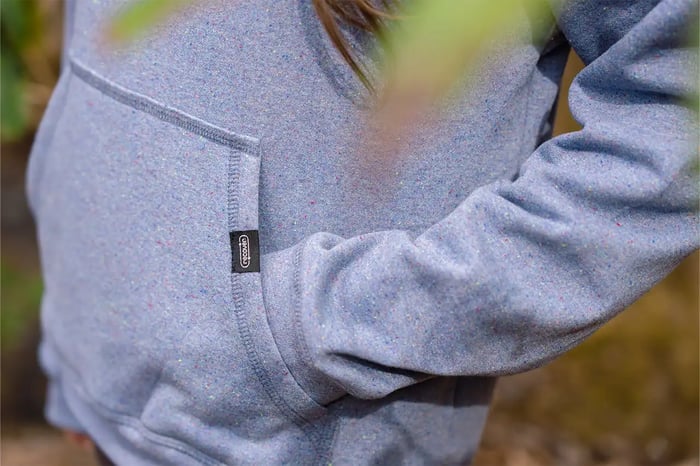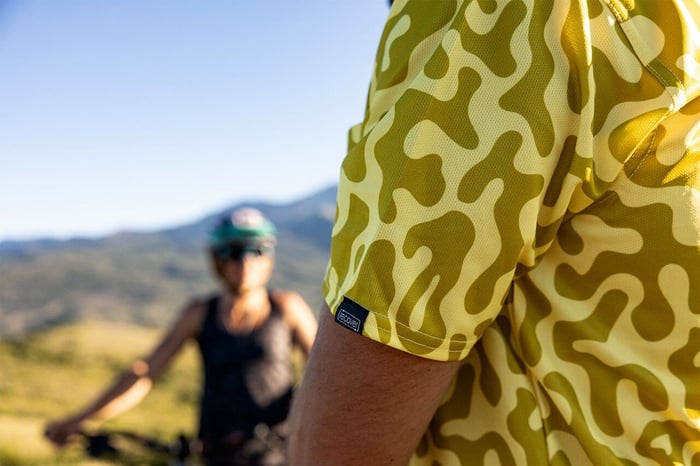When it comes to clothing, especially for t-shirts and sweatshirts, one of the first things we notice is the feel of the fabric– a soft, breathable fabric can make all the difference in our daily comfort. But how is a soft material feel usually achieved, and what is the impact?
Unfortunately, in many cases, a super-soft material feel comes at the expense of a large environmental footprint.
One of the most common types of methods used to achieve soft handfeel is using materials like viscose (rayon). These materials are semi-synthetic and made using regenerated cellulose, also known as man-made cellulosic fibers (MMCFs). They are produced by chemically converting wood pulp (typically derived from eucalyptus, beech, and pine) into fiber. Other fibers that are variants of this material can also include bamboo rayon and modal.
This process of converting these materials into a silky fiber typically involves large quantities of toxic chemicals that can pollute the air, waterways, and pose health risks to nearby people and animals.
The wood pulp that is used to make rayon materials is also often harvested unsustainably, contributing to deforestation and biodiversity loss. According to Canopy, an international organization working to protect forests, biodiversity, and the climate, more than 300 million trees are cut down each year to create fabrics (like viscose, rayon, modal, lyocell, and acetate). Some of these trees can come from endangered and climate-critical forest ecosystems.
In addition to using unsustainable fabric materials to achieve a soft handfeel, many manufacturers rely on additional chemical treatments to enhance fabric softness during the finishing stages of manufacturing. However, these chemicals can be toxic to the environment as well, many of which are persistent and difficult to remove from the environment once released.
At Recover, we believe that comfort and sustainability should not be at odds. Our approach to fabric goes beyond just a soft handfeel, as we also prioritize responsible manufacturing and environmental sustainability.
Every Recover product is made using responsibly sourced sustainable materials, including recycled polyester and recycled cotton. By using already existing materials, like post-consumer plastic waste and both post-industrial and post-consumer cotton waste, we avoid creating new materials that require a large amount of chemical processing and resource extraction.
Unlike many conventional apparel brands that rely on chemical finishing agents, we also do not use any additional finishing chemical treatments on our fabric to enhance handfeel. Instead, we focus on fabric innovation that prioritizes long-term softness and durability, with our products softening naturally over time with wear and washing. Our Eco, Classic, and Fleece collections are also manufactured without the use of dyes, further limiting our water and chemical use and making our production process even more sustainable.
We know that how a garment feels when wearing it matters, but so does its production journey, which is why we are committed to creating products that not only feel good but are also thoughtfully manufactured with the planet in mind. By using fabrics that balance both comfort and environmental responsibility, we are creating products that support a more circular and sustainable future for all.





